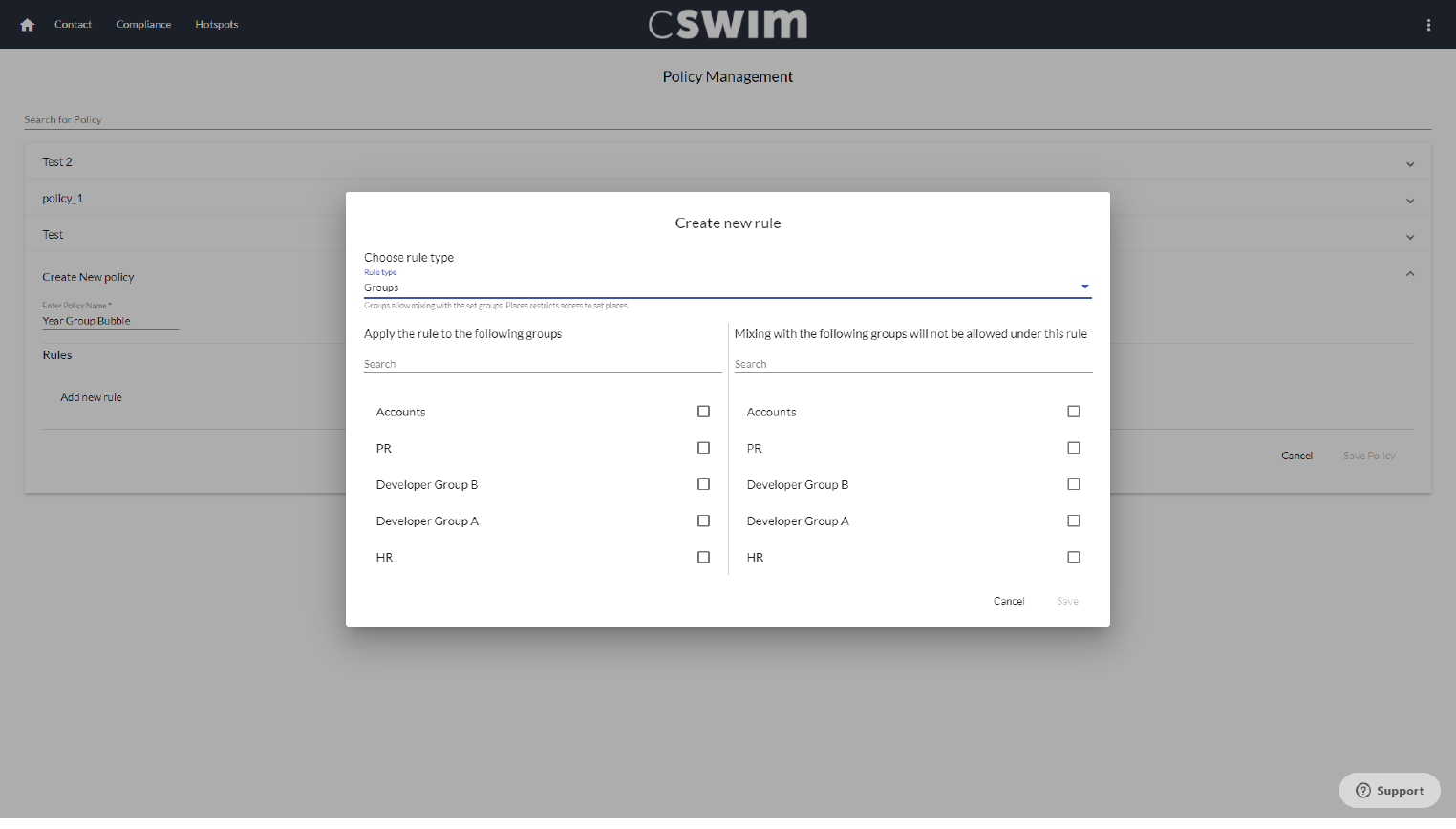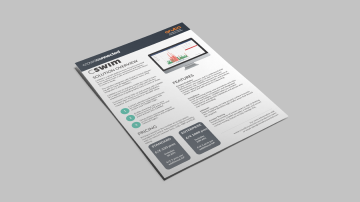Enhanced compliance module for workplace management

New CSWIM compliance rules
CSWIM’s compliance feature previously allowed customers to set permissible occupancy levels, and to monitor compliance.
In a major new release, three new types of compliance monitoring have been added, providing the flexibility to monitor across the spectrum of new rules that Covid risk management may require.
Occupancy monitoring
Occupancy monitoring allows customers to set the maximum permissible occupancy for any place. The compliance overview highlights where, how often, and by how much these rules are being breached. Charts and tables allow detailed analysis, and lists of employees who have visited during occupancy breaches can be generated, so that communication encouraging compliance can be targeted.
Visit duration monitoring
It’s now also possible to set a visit duration threshold for every place. Any breaches of the threshold can be analysed in just the same way as for occupancy limits. The tool can help minimise the time spent in areas of the workplace where contact isn’t valuable (for instance queuing at entry points). And where social distancing and reduced capacity mean that facilities like meeting spaces or canteens are in short supply, the tool can be used to support maximum stay policies.
Bubble monitoring
A completely new feature is group contact monitoring. A flexible system of policies and rules allows customers to define groups of employees who should not have face-to-face contact with other specified groups. ‘Bubble’ policies - whether year groups in schools, or isolated cohorts in manufacturing or distribution, can now be monitored for compliance.
Place monitoring
Place monitoring is also part of the new feature release. Policies and rules can be set up, defining particular places that specified groups of employees should not use. The flexible system supports multiple use cases. For instance assigning employees to a particular entrance to the workplace, or even particular buildings on campus.
Monitoring compliance is key
All these new features enhance CSWIM’s capability to monitor compliance with new rules and systems. And monitoring is key to any procedural risk controls. A new rule isn’t a reliable part of risk management unless it’s monitored.
The compliance features are not intended for ‘policing’ - sending security to eject someone from the canteen if there are too many people there.
Instead the features are designed to allow customers to monitor and improve compliance over time. Where non-compliance with rules is problematic, the trend can be monitored, and if necessary lists of employees who were in particular places at relevant times can be produced. This doesn’t identify individuals for discipline - instead it allows communication designed to improve long-term compliance to be targeted.


